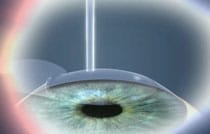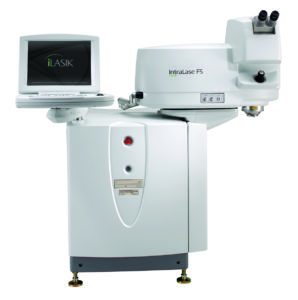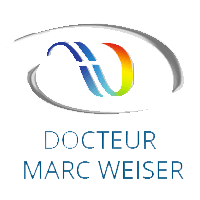LASIK (Laser Assisted In Situ Keratomileusis)
LASIK is a mixed technique combining two lasers, a femtosecond laser followed by an excimer laser. The femtosecond laser cuts tissues, and creates a flap inside the cornea; the excimer laser consists in a powerful beam of ultraviolet light guided by a computer, and flattens the cornea to treat myopia. I use in our facility different femtosecond and excimer lasers, allowing me to choose the most appropriate laser for each single patient.
The procedure is performed under local anaesthesia in an outpatient facility, and rarely exceeds thirty minutes for both eyes. The application of each laser beam takes less than one minute. The perfect balancing of the treatment is performed automatically, with the aid of an infrared camera. The corneal flap is then replaced at the end of the surgery, and immediately adheres to the deep layer of the cornea. No sutures are necessary. A local postoperative treatment is generally prescribed for a few weeks after the surgery.
A foreign body sensation in the operated eyes may last a few days. A touch-up is sometimes necessary after a few months to treat an off center ablation or an over/undercorrection. For the latter, the surgeon simply needs to lift the flap initially made and apply the excimer laser, before repositioning the flap. In very rare cases, cells from the corneal coating can migrate into the interface along with debris, which can potentially impact visual outcome. A touch-up is once again needed and consists in lifting the initial corneal flap, cleaning the interface and reapplying the flap.
LASIK is an extremely safe procedure and the results are independent from patient cooperation. The visual recovery is very fast, rarely exceeding 24 hours, allowing the patient to resume a normal life the day after surgery. LASIK is therefore the technique of choice, whenever possible and safe.
LASIK: images
Schematic procedure

LASIK - Excimer laser photoablation

Intralase femtosecond laser

